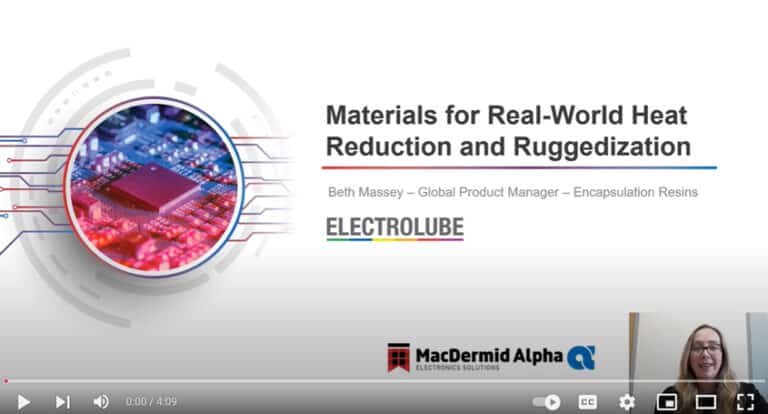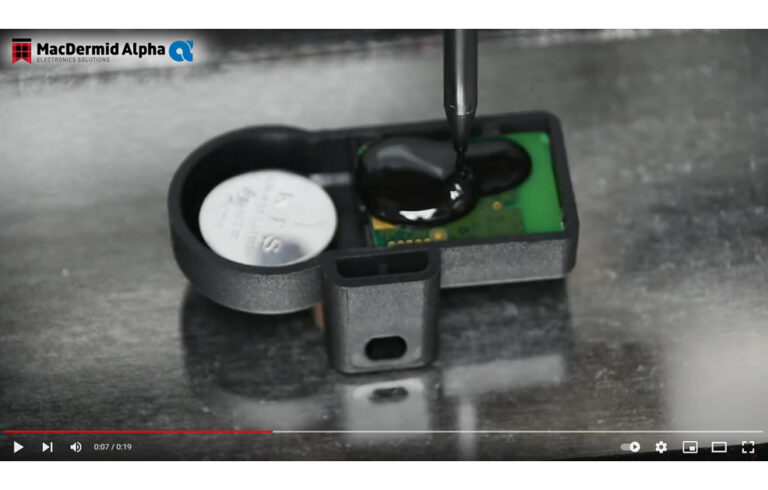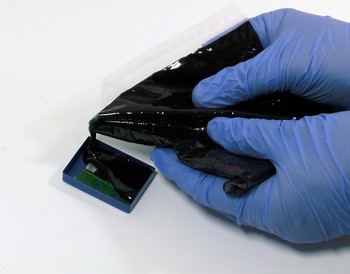Estimated read time: 658 words = 3 mins
By Phil Kinner, Technical Director For Electrolube’s Conformal Coatings Division
As we have been discussing over the last few months, thoughtful design will pay huge dividends down the line – and the designers among you will have friends for life among your production colleagues if you make their jobs just that little bit easier! So, having started the conversation about the importance of making sound early-stage design decisions, for my next blog, let’s look at some of the issues that the production department is likely to face when applying conformal coatings.
 1. Board layout!
1. Board layout!
By the ‘simple’ act of placing connectors and components that must not be coated along one edge of the assembly, the conformal coating application process will be simplified. This might allow dip coating to be explored as a potential alternative methodology, speeding application times and reducing costs. Also, avoid large arrays of discrete components, which can pose a huge coating challenge due to the high levels of capillary forces present. The net result is often areas of no coverage/protection on the board as well as areas of excessive thickness prone to stress-cracking, de-lamination and other coating defects. Similarly, tall components present challenges of their own by the creation of shadowed or hard to reach areas. Splashing is another associated problem. The trick is to avoid placing tall components next to ‘must-coat’ components in order to avoid this eventuality.
2. Airflow
Coatings can be abraded by particles drawn from the environment by cooling fans. Once the coating is abraded, unprotected parts of the circuit will be vulnerable to high humidity and condensation, which will lead ultimately to failure. If these operating conditions are expected, it is well worth considering the use of a breathable membrane or particulate filter – or choosing a more abrasion resistant coating.
3. Solder Paste Selection
The interaction between solder paste, solder mask, fluxes and coatings is not easy to predict and should always be tested for each design. The geometry and thermal profile of assemblies can significantly affect these interactions; just because it worked on the last assembly is no guarantee it will work on the next.
4. Housing
Returning to the subject of housings, many boards are qualified without their housings as this is the presumed worst case exposure. However, mechanical fasteners and fixtures in the housing can significantly affect the behaviour of the board during thermal shock or cycling by causing additional stresses on certain areas and changing the expansion and contraction dynamics of the system. It is also wise to remember: condensation in the housing can lead to WORSE environmental conditions than testing outside of the housing.
5. Edges
Getting liquid coatings to cover sharp edges of components can be difficult. Poorly coated edges, leads etc, can be worse than not coating, due to the formation of ‘micro environmental hotspots’ where the effect of contamination, corrosion and so on will be maximised. Try to avoid the use of high, sharp cut ceramic components in large arrays, since this will increase the difficulty of achieving good coverage through a combination of capillary flow, and the tendency of the coatings to pool. This is particularly true for ceramic capacitors, which are extremely susceptible to corrosion due to the chemicals used in their manufacture.
It is no easy task to choose the correct conformal coating for your product, let alone have confidence that, in applying it, you will have achieved the ultimate goal of protecting your electronics. Conformal coatings are available in many generic types; each has its strengths and weaknesses. Choose the right coating for the intended use and operational environment, rather than one that is used by your subcontractor or qualified on another product line for a different end-use environment. Be sure to test your design to ensure that it has sufficient robustness for the intended application. If you have any questions, or need more help in selection, we have a great section HERE, or you can contact our technical support team who will be happy to help.










